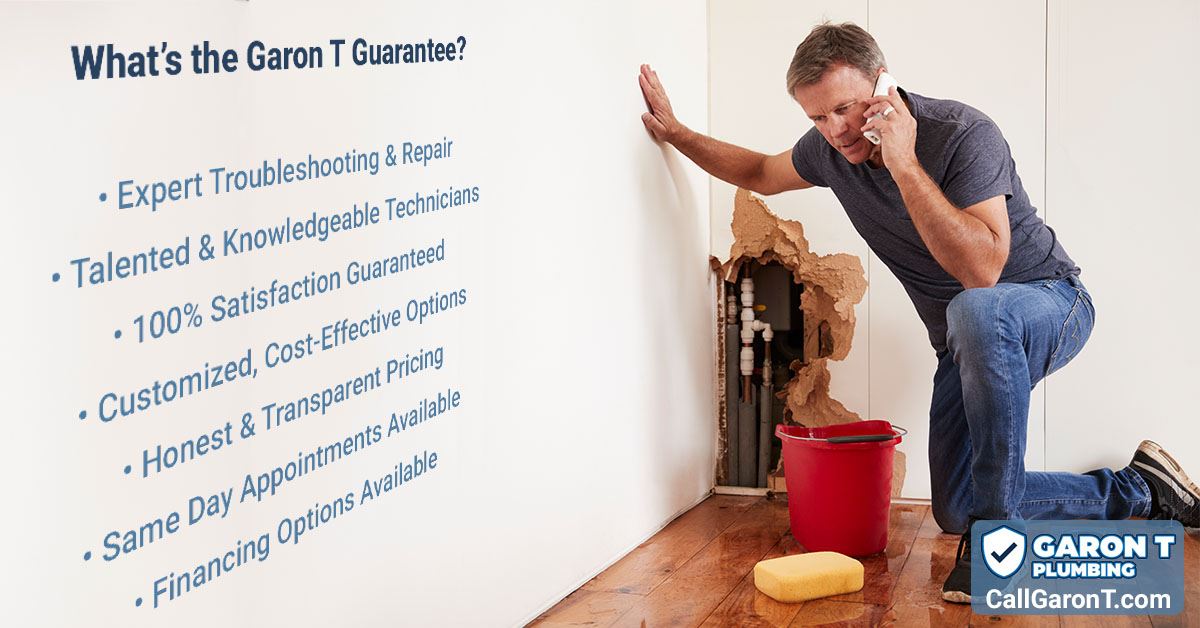What if you couldn’t flush the toilet anymore? Or wash dishes? Or take a shower?
A broken or clogged sewer line can stop your life in its tracks, and it’s one of the worst plumbing maintenance disasters that can happen to your home.
All that gray water—and worse—has nowhere to go but back up the pipe, resulting in slow drains, foul smells, rising sewer gas, and disgusting overflows.
Suddenly, you’re faced with replacing your sewer line. This vital home plumbing repair can cost upwards of $25,000 depending on the volume of dirt to be moved, how deep the sewer line was laid, the shoring needed to repair it properly, and other factors.
Traditional sewer line repair is an expensive, multi-step process that requires hiring a professional plumbing company and an excavator crew to dig up your yard and remove obstructions like trees or shrubs.
And what if the piping goes under your house or your driveway?
That all gets ripped up, so you’ll not only be looking at an expensive plumbing disaster but also the cost of renovating parts of your home or fixing your driveway.
What typically happens with traditional sewer line repair is that your home is turned into a multi-day job site (assuming the schedule goes according to plan), during which you won’t be able to shower or use the toilet.
Don’t get us wrong: traditional sewer line repair is an effective, proven solution, and we do a lot of it, but in some circumstances, trenchless sewer repair is the way to go.
TABLE OF CONTENTS
What is Trenchless Sewer Repair?
Which Issues Can Be Resolved by Trenchless Pipe Repairs?
Most Common Causes of Broken or Blocked Sewer Lines
Warning Signs of a Broken or Blocked Sewer Line
Benefits of Trenchless Sewer Line Repair
What is Trenchless Sewer Repair?
Trenchless Sewer Repair can save you a lot of hassle, time, and money compared to traditional methods.
It’s less expensive and can result in a sewer line repair that lasts for 30 years … and it can usually be done in a single day.
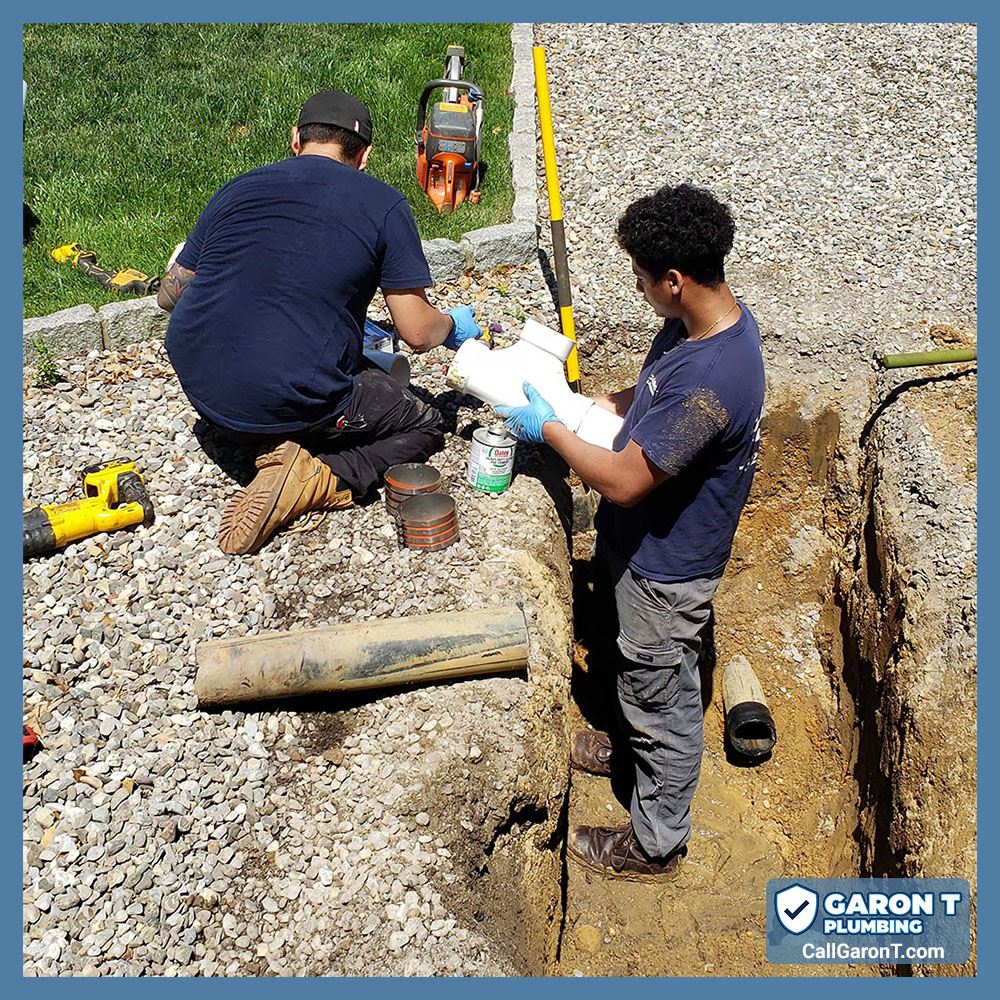
Trenchless Sewer Repair doesn’t require a long, narrow ditch that could literally go through parts of your home, rerouting traffic if your sewer line issue conflicts with the town or city sewer.
It’s also much faster than traditional methods, often requiring only a day for installation.
Trenchless Sewer Pipe Repair is a proven, high-tech plumbing method that requires just two joints. Piping is heated and welded into one continuous run of piping that is much stronger than traditional methods.
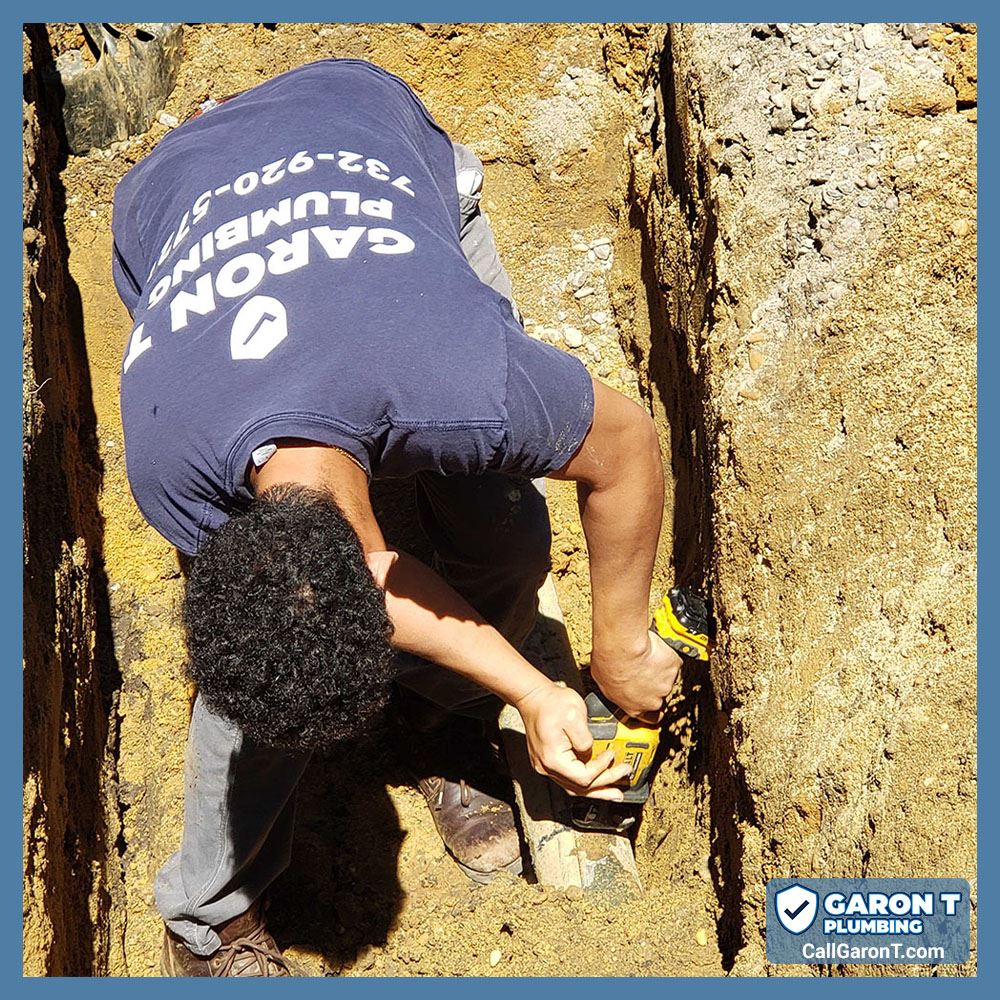
Pro Tip: Sewer lines are often broken if they’re blocked and require drain cleaning. A camera inspection can ascertain the problem spot and the necessary repairs.
Which Issues Can Be Resolved by Trenchless Sewer Line Repairs?
Trenchless Pipe Repair is a great method to repair:
- Cracks in clay, lead, plastic, and cast-iron pipes.
- Corrosion in pipes caused by rust.
- Minor pipe misalignment.
- Tree roots that are infiltrating the piping system.
- Sewage backups.
Trenchless Sewer Repair is a great application for fixing sewer lines before they collapse.
For example, imagine that you’re experiencing clogged or slow drains, and you call your plumber.
The plumber arrives and snakes the offending pipe and can’t unclog it.
He then uses a camera to conduct a visual inspection, and bam! There it is! The clog to end all clogs.
He informs you that failure is imminent.
You don’t go through with the repair.
Maybe it costs too much, or you don’t think it’s a big issue, or you’re hoping it will unclog itself (it won’t.)
Eventually, the sewer line collapses.
Now, you’ve got a much bigger, more disruptive, and more expensive problem on your hands.
Or you could be proactive. Why risk up to a $25,000 repair when you could choose Trenchless Sewer Repair?
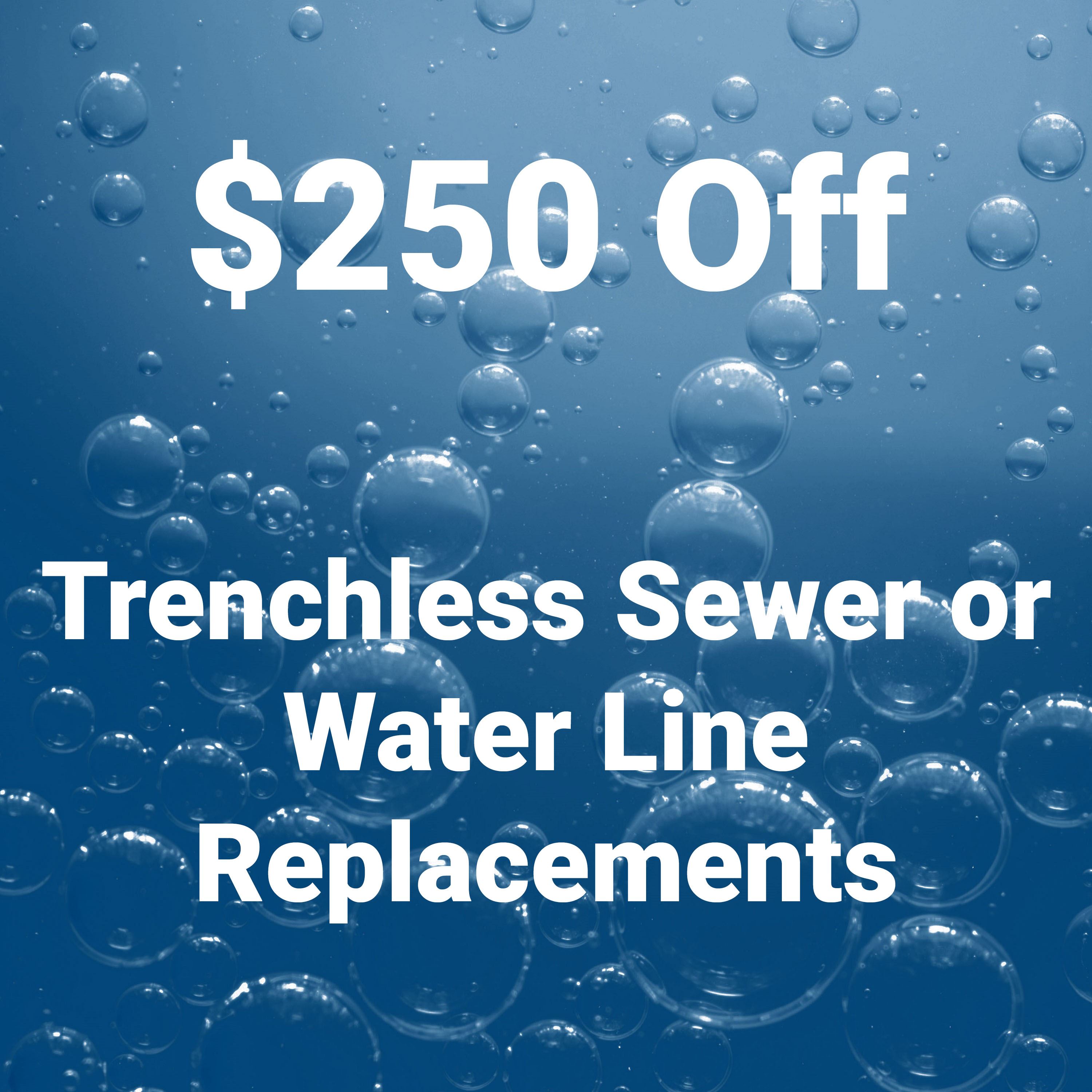
The bottom line is that trenchless sewer repair often solves clogged or broken sewer lines that haven’t yet collapsed.
So, don’t put off that repair!
What Are the Most Common Causes of Broken or Blocked Sewer Lines?
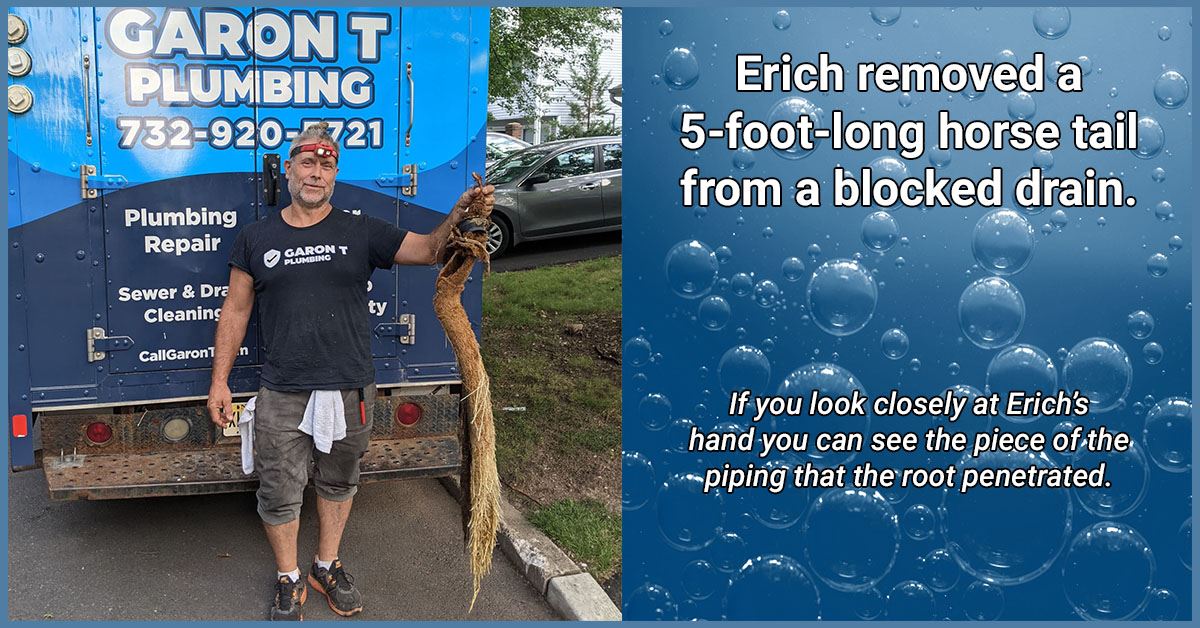
#1 - Root Intrusion
When is a horse tail not a horse tail? When it’s an evil root that snakes its way into a sewer line like the one pictured above. 😲
Trees and shrubs love traditional sewer piping materials because if they start to leak, their roots are attracted to the water like magnets.
Once they get a drink, they keep growing into sewer and water lines and cause hundreds or even thousands of dollars of damage for unsuspecting homeowners.
Traditional drain cleaning can remove roots and restore flow, but the roots will continue to invade until the pipe is repaired and all leakage is stopped.
Trenchless Sewer Repair is a great option to fix it.
#2 - Broken Sewer Line Due to Pipe Settlement
Another common problem that results in broken or blocked sewer and water lines is ground settlement.
You probably don’t think about the pipes under the ground - why would you - but ground settlement can make a sewer or water line sink and create a downhill slope toward your house rather than away from it.
This is referred to as “back-pitch.”
Waste materials that should flow to your septic tank or city sewer line build up in the settled part of the pipe and create a blockage.
The only solution to this problem is to repair the slope of the damaged sewer line.
#3 - Age of Piping/Old Homes
The gold standard for residential plumbing these days is plastic (usually PVC), which can last up to 100 years with proper maintenance.
This wasn’t always the case.
Plumbing in older homes often used clay, cast iron, or galvanized steel piping which simply isn’t as durable or strong as modern piping. Lead piping can contaminate your drinking water and can corrode if your water is highly acidic or has low mineral content.
For example, many homes built between the 1950s and 1970s used transite sewer pipes. They’re fairly resistant to corrosion, but the older technology of connecting these pipes wasn’t as reliable as modern technologies. Orangeburg pipe was used as recently as 1972, but it’s prone to weakness and failure, so if you’ve got Orangeburg, be prepared for a piping issue soon.
#4 - Poor Workmanship
It can be difficult, if not impossible, to tell if the plumbing in your home was done by a real pro or a hack. The most important stuff is hidden in the walls and isn’t even visible.
However, there are some signs of sloppy plumbing that may indicate the level of skill of whoever did your plumbing.
- Loose Faucets/Showerheads/Drains - This can mean that a plumber didn’t properly attach or mount your pipes in the wall. Any experienced plumber will tell you it’s a big no-no. Your fixtures shouldn’t move when you turn a faucet or a valve.
- Lots of Caulking - Expert plumbers will use a very thin line caulk around your fixtures. If the caulking appears copious, it can mean that the plumber didn’t accurately measure the pipe feeding the fixture and tried to cover up the error rather than fixing it properly, which is more time-consuming. Caulk tends to mold when exposed to water, so if you see a black mold forming around your fixture, you likely have this problem.
- Cheap Plumbing Fixtures - This is one area where you don’t want to cut costs because you get what you pay for. Cheap fixtures will lead to problems down the road. Good plumbers will source their materials from plumbing supply stores that sell quality products, not big-box stores.
- Sloppy Joints - If there is a lot of glue or sealant at the joints of your pipes, you may encounter a problem. It’s the mark of an amateur. Accuracy is very important in plumbing.
- No Pipe Protection - Want to sink a nail into a wall and end up with a plumbing disaster? Make sure your plumber uses protective plates to ensure that you don’t nail through a pipe the next time you go to hang that new family portrait.
What Are the Warning Signs of a Broken or Blocked Sewer Line?
One of the most obvious signs is foul smells coming from drains. If you hear gurgling sounds as well, it can mean that sewer gasses are being pushed up through the water plugs in your drainpipes.
Do you have a shower or bathtub that just doesn’t want to drain properly? Does it seem immune to plunging or other kinds of clog removal methods? You’ve got a problem.
Has your lawn started to smell a bit like a sewer? When sewage seeps into the ground, the smell rises into your lawn … and your nose. You’ve got a problem.
Water damage from sewer or water line backflow often appears in basements first, so if you notice water stains, it’s time to call a plumbing pro.
Mice, rats, and other pests are attracted to strong smells - it’s how they survive - so if you start to see these pests in your basement or around your house, it may be a sign that your sewer line needs some TLC.
Benefits of Trenchless Sewer Line Repair
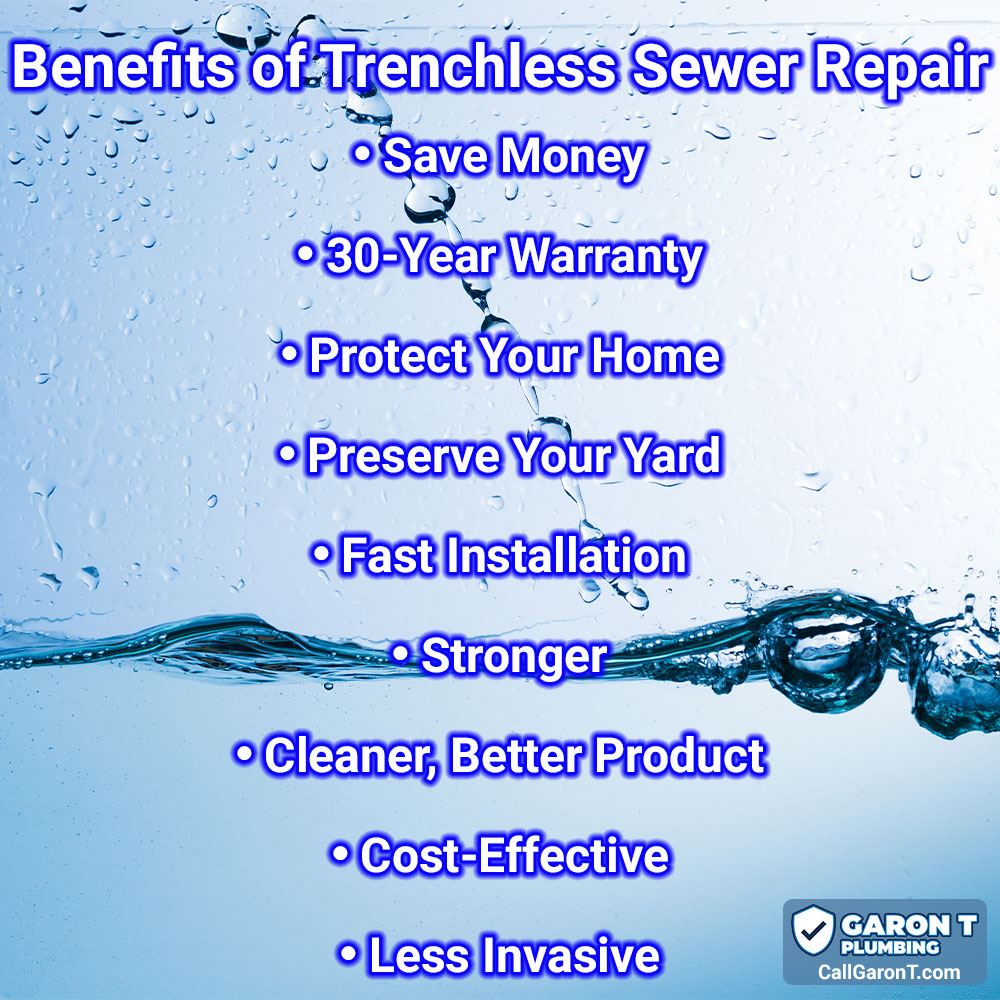
Why should you learn more about Trenchless Sewer Line Repair? There are many proven benefits to using this plumbing technique:
- Save Money – Trenchless Sewer Line Repair is usually cheaper than traditional methods.
- 30-Year Warranty – Your repair will last decades.
- Protect Your Home – Avoid catastrophic plumbing problems like overflows and water damage.
- Preserve Your Yard – Disruption to landscaping is minimized.
- Faster – Installation is usually completed in just one day, compared to the more involved multi-day process for traditional methods.
- Cleaner, Better Product – Uses the latest plumbing technology and methods.
- One Continuous Run of Piping that is Much Stronger – Fewer joints mean fewer areas that can fail.
- Cost-Effective – Traditional methods are often invasive, and anything that gets demolished in the process of accessing your pipes—like your home or driveway—you’ll have to pay for. Ready for a bathroom or kitchen remodel? If not, Trenchless Sewer Repair might be the way to go.
- Less Invasive – Trenchless Sewer Repair keeps disruption to a minimum.
Do you think Trenchless Sewer Pipe Repair is right for your project? Not sure?
Give us a call or contact us today. We’ll be happy to help you out.
